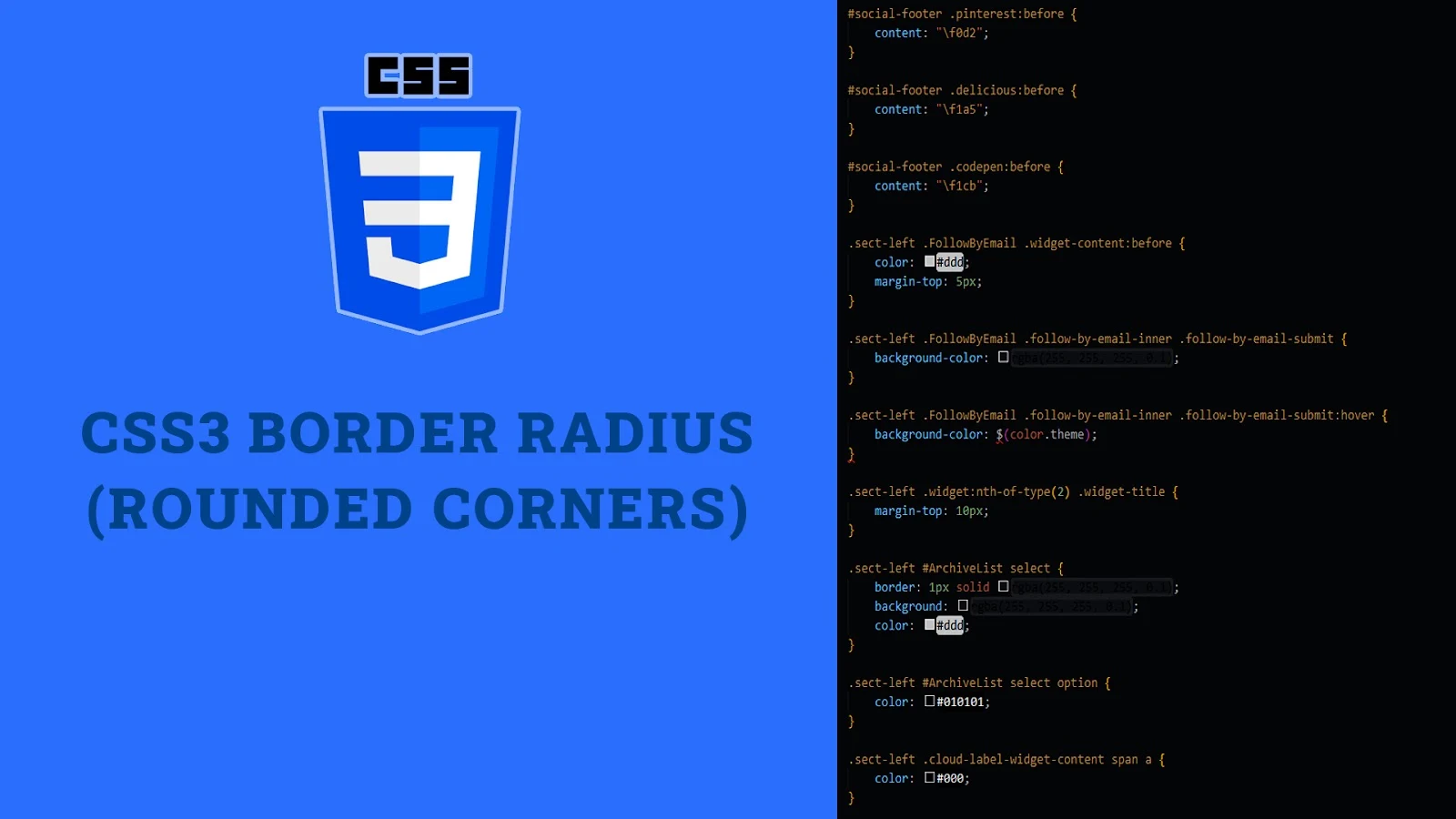One of the most widely used features in CSS3 is the `border-radius` property, which allows developers to add rounded corners to elements. This property can be used to create smooth, visually appealing designs without the need for images or additional markup. In this article, we'll explore how to use the `border-radius` property, discuss its different values, and provide practical examples to demonstrate its usage.
Understanding `border-radius`
The `border-radius` property defines the radius of an element's corners. It can accept one to four values, allowing for varying degrees of roundedness on each corner. The property can be applied to all HTML elements, including block-level and inline elements, and is supported by all modern browsers.
Syntax:
element {
border-radius: value;
}Single Value:
A single value applies the same radius to all four corners:
.box {
border-radius: 10px;
}Multiple Values:
Multiple values can be used to apply different radii to each corner:
.box {
border-radius: 10px 20px 30px 40px; /* Top-left, top-right, bottom-right, bottom-left */
}Elliptical Radii:
Elliptical radii can be applied to create non-circular rounded corners using two values:
.box {
border-radius: 50px 100px;
}Practical Examples of `border-radius`
Let's look at some practical examples of how to use the `border-radius` property to create visually appealing designs.
Creating Rounded Buttons:
<button class="rounded-button">Click Me</button>.rounded-button {
background-color: #3498db;
color: #fff;
border: none;
padding: 10px 20px;
border-radius: 5px;
}Rounded Images:
Applying `border-radius` to images can create a circular or elliptical effect:
<img src="image.jpg" class="rounded-image" alt="Description" />.rounded-image {
width: 150px;
height: 150px;
border-radius: 50%; /* Creates a circular image */
}Card with Rounded Corners:
<div class="card">
<h3>Card Title</h3>
<p>This is a card with rounded corners.</p>
</div>.card {
border: 1px solid #ccc;
padding: 20px;
border-radius: 10px;
}Advanced Usage of `border-radius`
In addition to creating rounded corners, the `border-radius` property can be combined with other CSS properties to create more complex and visually appealing effects.
Using `border-radius` with Shadows:
<div class="shadow-box">
<p>This box has rounded corners and a shadow.</p>
</div>.shadow-box {
border-radius: 15px;
box-shadow: 0 4px 8px rgba(0, 0, 0, 0.1);
padding: 20px;
background-color: #fff;
}Combining `border-radius` with Gradients:
<div class="gradient-box">
<p>This box has rounded corners and a gradient background.</p>
</div>.gradient-box {
border-radius: 20px;
background-image: linear-gradient(to right, #f39c12, #f1c40f);
padding: 20px;
color: #fff;
}Creating Elliptical Shapes:
<div class="ellipse">
<p>This box has an elliptical shape.</p>
</div>.ellipse {
width: 200px;
height: 100px;
border-radius: 100px / 50px; /* Creates an elliptical shape */
background-color: #3498db;
color: #fff;
text-align: center;
line-height: 100px;
}Fun Facts and Little-Known Insights
- Fun Fact: The `border-radius` property was introduced in CSS3 and has since become one of the most popular features, widely used in modern web design.
- Insight: You can create complex shapes like circles and ellipses using the `border-radius` property, making it a versatile tool for creating various design elements without additional HTML or images.
- Secret: Combining `border-radius` with other CSS properties like `box-shadow` and `background-image` can enhance the visual appeal of your designs, creating more engaging and interactive user experiences.
- Trivia: Before the introduction of `border-radius`, developers often used images or JavaScript to create rounded corners, which increased the complexity and load times of web pages.
- Hidden Gem: The `border-radius` property can be animated using CSS transitions, allowing for smooth and visually appealing effects when elements change state or are interacted with.
Conclusion
The `border-radius` property in CSS3 is a powerful tool for creating rounded corners, circles, and ellipses. By understanding its syntax and various values, you can easily enhance the visual appeal of your designs. Combining `border-radius` with other CSS properties like `box-shadow` and `background-image` can create complex and engaging effects, making your web pages more interactive and visually appealing. Following best practices and exploring advanced usage of `border-radius` will help you create modern, responsive, and attractive web designs.
 Reviewed by Curious Explorer
on
Sunday, December 08, 2024
Rating:
Reviewed by Curious Explorer
on
Sunday, December 08, 2024
Rating:




No comments: